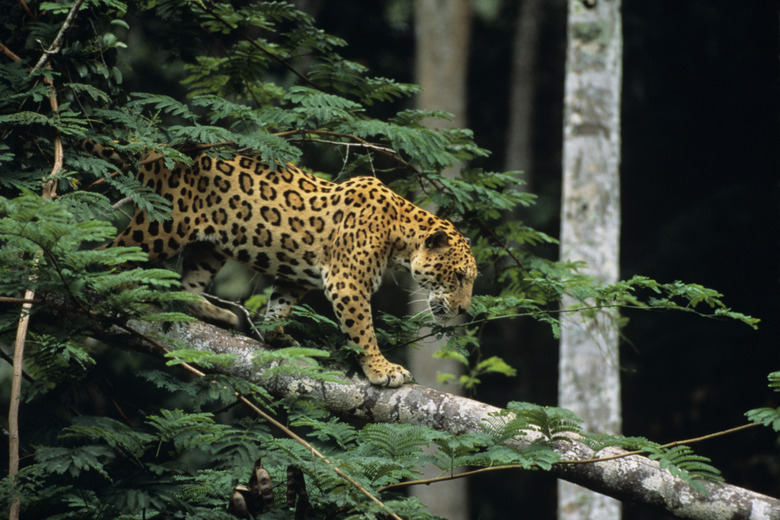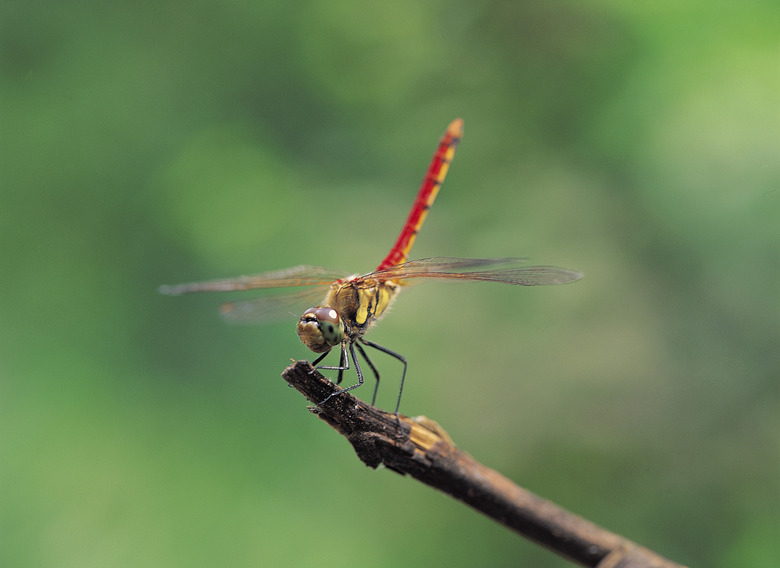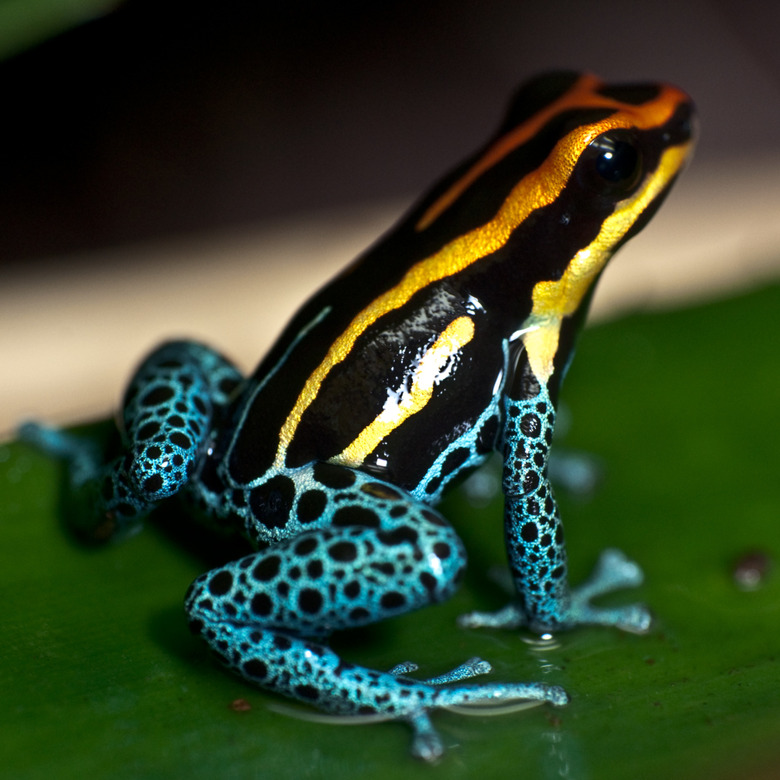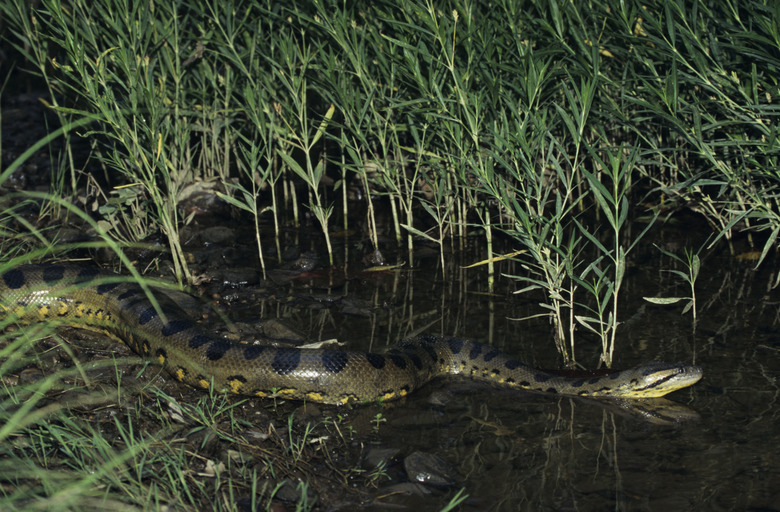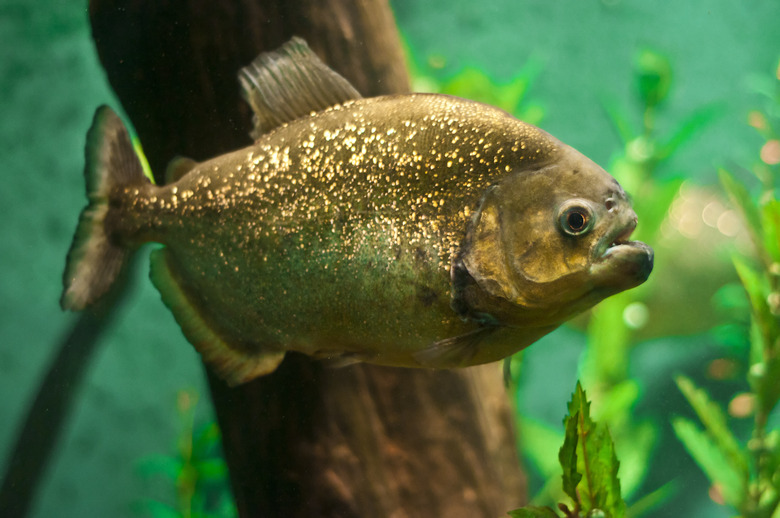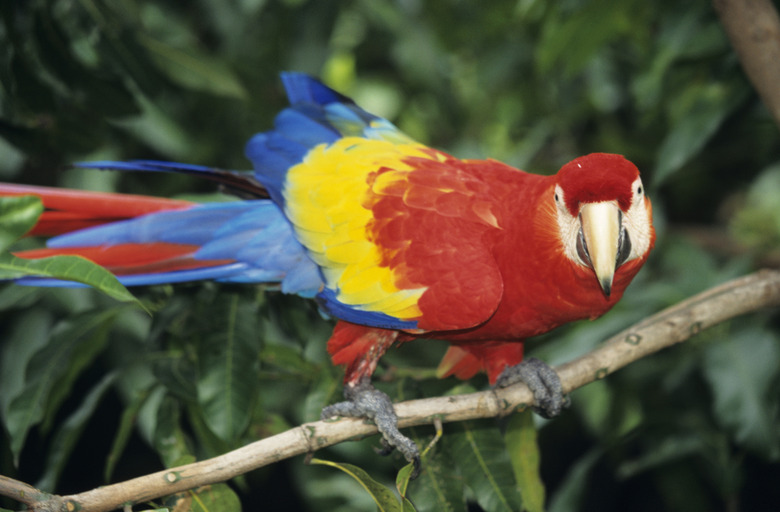Animals In The Tropical Rainforest Food Chain
Rainforests have historically covered much of the land area around the equator. These lush, wild jungles provide planet Earth with an abundance of both plant and animal species. Animals in the tropical rainforest form an intricate web of life, each of which is important to the health of the whole.
Insects in the Tropical Rainforest
Insects in the Tropical Rainforest
Insects are invertebrates that make up the majority of the species and individual animals in the tropical rainforest. Though tiny, their impact on the environment is tremendous. Examples of tropical rainforest insects include butterflies, beetles, bees and ants.
Tropical rainforest insects have been known to grow to much larger sizes than other related species. Dragonflies that are 15 cm long and 30 cm long walking sticks have been recorded.
Tropical rainforests occur all over the world, and each forest is home to a unique array of diverse insects. However, in all rainforest systems, insects perform similar functions. Through their actions, insects help to break down dead and decaying matter and aerate the soil. They also provide food for larger larger vertebrates and invertebrates.
Amphibians in the Tropical Rainforest
Amphibians in the Tropical Rainforest
Amphibians are animals that live part of their time on land and part in the water. This group includes frogs and salamanders. All amphibians are important to the rainforest system, as they prey on bugs and their larvae, keeping their numbers in check, as well as by providing food to higher vertebrates.
Though there are thousands of species of amphibians in the rainforest, the most colorful and easily recognized species are the poison dart frogs. These colorful creatures are tiny and spend their lives eating bugs from the cool, moist shade of the rainforest understory.
The name "poison dart frogs" comes from the fact that these tropical rainforest amphibians secrete a toxic poison from their glands, making them deadly to would-be predators. Native hunters have learned to harvest the poison from the poison dart frogs and use it on the tips of their arrows in order to kill prey more efficiently.
Reptiles in the Tropical Rainforest
Reptiles in the Tropical Rainforest
Reptiles slither along the ground and in the trees of tropical rainforests. Snakes are one of the most abundant types of tropical rainforest animals in the class Reptilia. The largest snake species in the world, the anaconda, lives in the rainforests of South America. Anacondas are constrictors that squeeze their prey to death. These top predators typically grow to 17 feet (five meters) but have been known to reach lengths of up to 36 feet (11 meters)! Anacondas feed on large prey such as tapirs, deer, capybaras, peccaries and even jaguars.
Smaller snake species, such as the boa and the python, also live in the tropical rainforests, feasting on smaller invertebrates as well as small mammals. Like anacondas, these species squeeze their prey to death and eat it live, while other species, such as the colorful coral snake, carry deadly poison to attack their prey. Other reptiles that dwell in the rainforest include lizards (such as iguanas) and turtles.
Fish in the Tropical Rainforest
Fish in the Tropical Rainforest
Rainforests are criss-crossed by waterways that are rich with freshwater fish. Fish are important for rainforest ecology because they provide food for other animals, especially humans. Fish also cycle rainforest nutrients, digesting plant material and turning it into rich fertilizer, which is important since the soil in rainforests is typically very nutrient poor.
Competition for food amongst tropical rainforest fish is tough, leading some species to develop strong survival strategies. The most famous of the rainforest fish is the piranha of the Amazon River, a fish that has developed rows of razor sharp teeth and a vicious personality to accompany them.
Birds in the Tropical Rainforest
Birds in the Tropical Rainforest
The tropical rainforest is always alive with the sounds of birds, coo-ing and cawing from the branches high above the ground. Birds of the tropical rain forest are known for their bright color, such as parrots, macaws and toucans. They eat a variety of foods, including seeds, fruits, insects, plants and even small animals. An important link in the food chain of the tropical rainforest, birds spread seeds around the forest as they fly, adding to the diversity and richness of the forest.
Mammals in the Tropical Rainforest
Mammals in the Tropical Rainforest
Mammals are some of the largest – and smallest – members of the rainforest community. Small tropical rainforest mammals include rodents, such as mice, squirrels and sugar gliders. Large mammals of the tropical rainforest include the majestic jaguar, the sluggish sloth, possums, raccoons and armadillos.
Humans are also important tropical rainforest mammals. Native tribes have lived for millennia in harmony with the rainforest biological community, living off its rich natural biodiversity. As a group, tropical rainforest mammals eat vegetation, grass, invertebrates, insects and even other mammals and help to maintain the delicate balance of the tropical rainforest food chain.
Cite This Article
MLA
Julian, Andrea. "Animals In The Tropical Rainforest Food Chain" sciencing.com, https://www.sciencing.com/animals-tropical-rainforest-food-chain-8456225/. 30 September 2021.
APA
Julian, Andrea. (2021, September 30). Animals In The Tropical Rainforest Food Chain. sciencing.com. Retrieved from https://www.sciencing.com/animals-tropical-rainforest-food-chain-8456225/
Chicago
Julian, Andrea. Animals In The Tropical Rainforest Food Chain last modified March 24, 2022. https://www.sciencing.com/animals-tropical-rainforest-food-chain-8456225/
